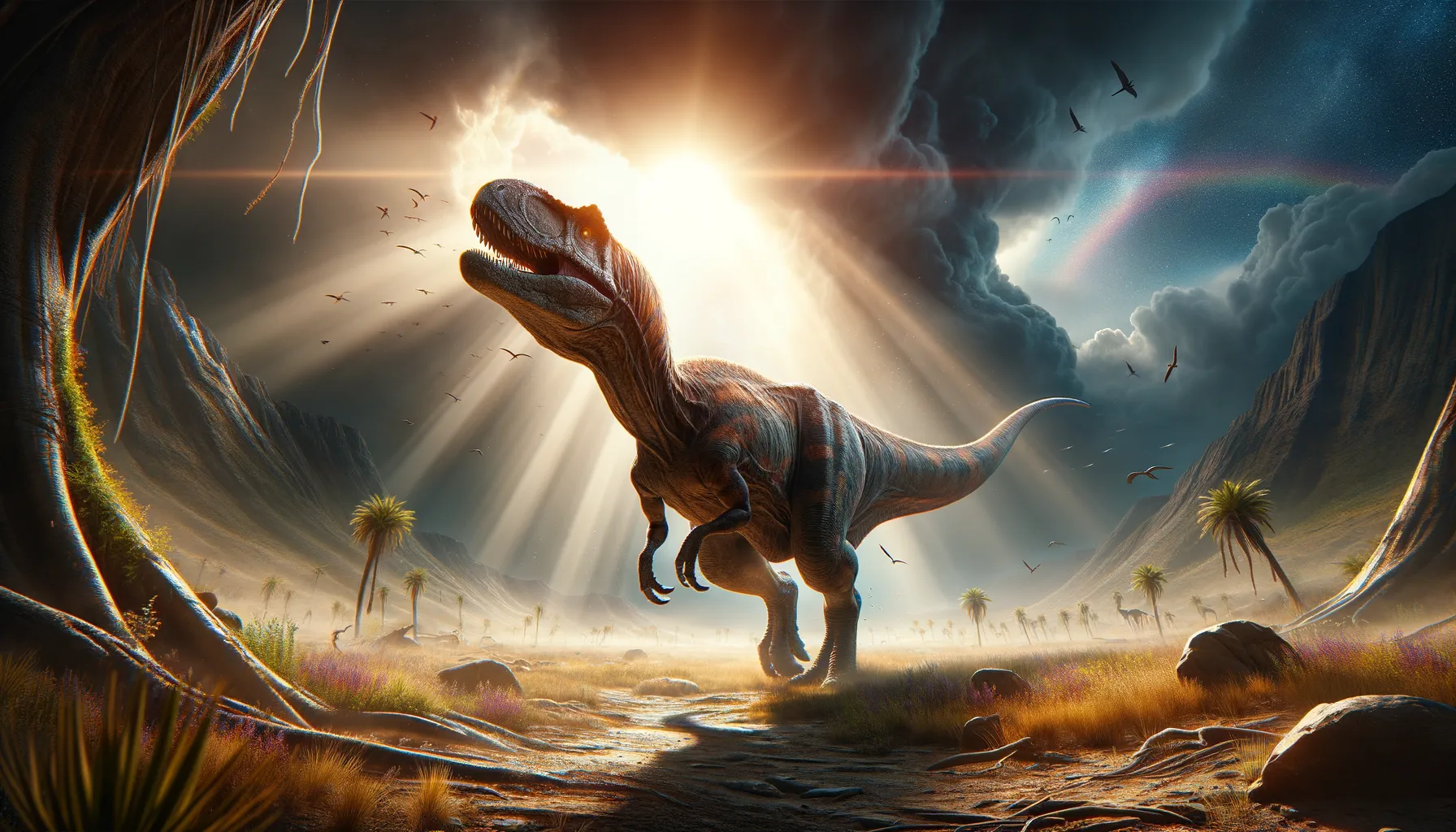
Kayentavenator
Swift predator of the early Jurassic era.
Period
Jurassic
Length
Measured roughly 2 meters in length.
Height
Stood around 0.6 meters tall.
Weight
The weight was probably about 20 kg.
Kayentavenator is a relatively small theropod dinosaur from the Early Jurassic period, known primarily from fossil remains found in North America. It is believed to have been a swift predator, using its speed to hunt smaller prey. With its modest size, it provides insight into the diverse ecosystem and fauna of the time, reflecting both the challenges and adaptations that dinosaurs faced in their environments.
Diet
Kayentavenator was carnivorous, likely feeding on small vertebrates and insects. Its diet would have required swift and agile movements to capture fast-moving prey.
Hunting
This dinosaur was a likely hunter, using quick bursts of speed to catch prey off guard. It relied on its agility rather than stealth, making rapid chases through its terrain.
Environmental challenges
Kayentavenator faced a host of environmental challenges, including fluctuations in climate and landscape changes. The need to compete with other larger predators for food meant it had to be resourceful. It also had to navigate a world filled with larger herbivores that could pose threats. Survival depended on keen senses and the ability to adapt to shifting conditions.
Speed
Estimated to have been a fast runner.
Lifespan
Likely around 20-25 years.
First discovery
Discovered in the early 2000s in Arizona, USA.
Fun Facts
- Kayentavenator was a small dinosaur that lived during the early Jurassic period, about 190 million years ago.
- Its name means 'Kayenta hunter,' named after the Kayenta Formation where it was discovered.
- Despite its small size, Kayentavenator was a theropod, which means it was a meat-eating dinosaur.
- Fossils of Kayentavenator were found in what is now Arizona, USA.
- It's believed that Kayentavenator was a swift runner, using its speed to catch prey.
- Kayentavenator is considered a close relative of the famous T. rex, although much smaller.
- The discovery of Kayentavenator helped paleontologists understand more about the early evolution of theropods.
Growth and Development
Kayentavenator went through significant changes from a hatchling to an adult. It likely grew rapidly to reach maturity, a common trait among smaller theropods. Juveniles may have stayed in groups for protection, while adults were more solitary. Understanding its growth gives insights into its life history and changing ecological roles.
Habitat
Kayentavenator inhabited a semi-arid environment with seasonal changes. The landscape was dotted with rivers and floodplains, providing a rich hunting ground. Vegetation consisted of ferns and conifers, indicating a lush though challenging environment. Its presence suggests a competitive ecosystem with abundant food resources.
Interaction with other species
As a predator, Kayentavenator would have interacted primarily with prey species, impacting local populations. It coexisted with other small and medium-sized dinosaurs, sharing the ecosystem. Competition for resources likely shaped its behavior, and occasional encounters with larger carnivores would have been significant events. Cooperation or conflict with its kind for territory or mates is also possible.
Natural lifespan
Kayentavenator likely had a natural lifespan of around 20-25 years.
Reproduction
This dinosaur likely reproduced by laying eggs in nests, similar to other theropods. Parental care post-hatching could have involved guarding the nest from predators. Elevating the eggs to optimal temperatures would have been critical for their development. The breeding season might have aligned with specific environmental cues, ensuring the young had access to sufficient resources.
Social behaviour
Kayentavenator might have exhibited solitary behavior, as is common among many predatory dinosaurs. Territoriality could have played a role, with individuals marking and defending turf. Occasional grouping may have occurred during migrations or for mating purposes. Basic communication signals would likely have been used for interactions or establishing dominance.
Fossil locations
Fossils of Kayentavenator have primarily been found in Arizona, USA. The Kayenta Formation, where it was discovered, is a rich source of Early Jurassic dinosaur fossils. These sites provide valuable information about the diverse prehistoric life and ecosystems. The well-preserved fossils allow researchers to study its anatomy and draw conclusions about its lifestyle.
